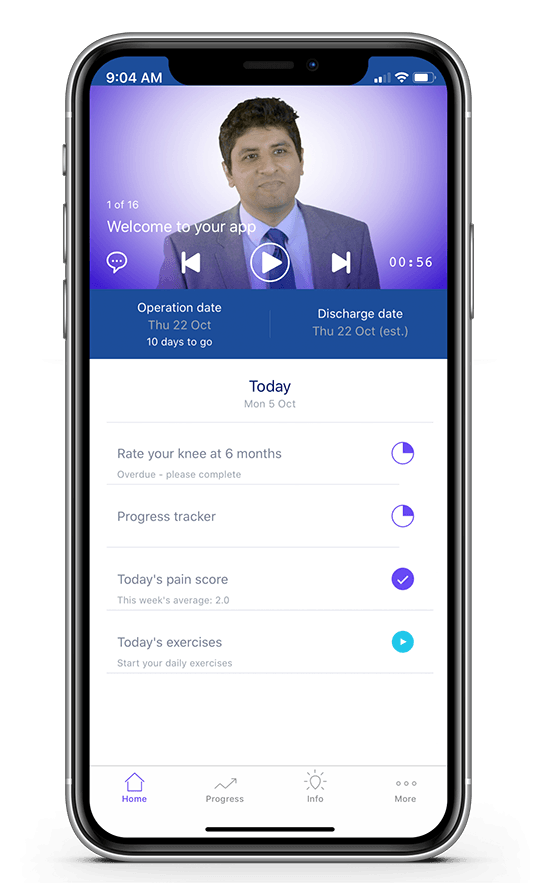Revision Hip Replacement
Revision hip replacement is commonly used to correct the loosening of cement used in fitting artificial socket into hip bone. If this happens, the socket loosens and it begins to rub against the bone it is fixed into. This results in dissolution of the bone. The cement around the femoral content can also loosen up with time.
An infection deep in the hip may also lead to this procedure. The hip components need to be removed to gain access to and get rid of the infection.
The operation may also be used in a case where a patient suffers multiple hip dislocations. The dislocations are usually a result of insufficient tension or tightness in the ligaments and muscles around the replacement.
Another reason for the procedure is a defect of bone development or bone patches that even after they are well fixed, still show on an X-ray. Caused as a result of the body reacting to particles produced by wear and tear, the damage sustained by the bones are progressive and may lead to weakening or fracturing of the bones. It therefore has to be renewed to prevent further damage.
Revision Hip Replacement
The procedure is often complicated and takes some rather long time. There are also more risks involved. Healing takes long and recovery varies from one patient to another. The problems are also different from patient to patient; hence the revision replacements are custom tailored.
Consideration on Revision Hip Replacement
When planning for the surgery, these factors need to be considered.
- What caused the hip failure?
- Is the hip infected?
- Which hip replacement components have failed and are to be replaced?
- What has the failure led to? For instance, is there loss of bone?
- Is the bone stock left enough to hold the new replacement components?
- If the bone loss is significant then how is that to be covered or circumvented?
- How are the implants fixed? Has cement been working?
- Can the implants be extractedminus damaging bone and soft tissues?
- What is the model and make of the hip in use?
- Do the manufacturers still offer the “matching” components?How soon before the operation should the components be ordered in?
- Can non-standard components be used to deal with the situation of the patient?
- Which are the most ideal components and from which manufacturer are they?
Precautions
It is an artificial joint being introduced and lots of precautions need to be taken to prevent complications. Within the first 6-8 weeks, these are some of the precautions to pay heed to:
- If the pain in the operated hip increases or there is leaking or redness, a doctor should be contacted as soon as possible.
- Avoid bending the knee more than 90 degrees as it may dislocate off the joint.
- Do not sit on low chairs or low seats.
- Avoid bending to pick objects from the floor
- Do not force the knees to bend such as when clipping the toe nails
- Avoid twisting knee joint
- Avoid crossing legs
- For the first 6 weeks after surgery, do not lie on side
- Internal exam and dental works should be conducted to check for infections anywhere else in the body as they are known to spread to the operated area.
Antibiotics should be used to prevent infections.
Possible Complications
Change in leg length – A revision surgery may lead to changes in the length of the leg. This is more common with primary surgery due to the soft tissue quality ad bones available. The change is however slight and can be countered with a shoe raise on the shorter leg.
Thrombosis – There is a high risk of thrombosis as compared to primary surgery as the surgery stays longer and the bones and soft tissue are not as good.
Reduced mobility – As compared to patients of first time surgery, revision patients are not as mobile. This may also add onto the risk of formation of blood clots.
Dislocation – There is an increased risk of dislocation by about five times as compared to the primary procedure.
Infection – This is by far one of the most serious complications. Antibiotics can be used to avert it. These should be provided well before the procedure and after the procedure as well.
Nerve injury – Sciatic nerve might get injured though this is seldom. The injury however involves only a portion of the nerve and it can be reversed. A majority of patients recover from it.
Fracture of the thigh bone – There is the risk of the thigh bone breaking during the procedure. This is due to the bone and soft tissue which may be stiff, hard and stuck while the bone may be weak.
Loosening of the artificial hip – There is the possibility of the revised heap loosening up and requiring another correction.
The patient needs to visit the doctor regularly as there are some cases in which the loosening happens with no pain but the bones are damaged all the same. An X-ray can be used to identify any complications with the replacement components.


